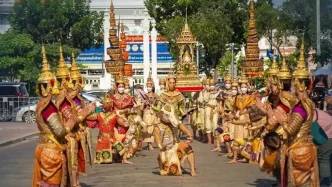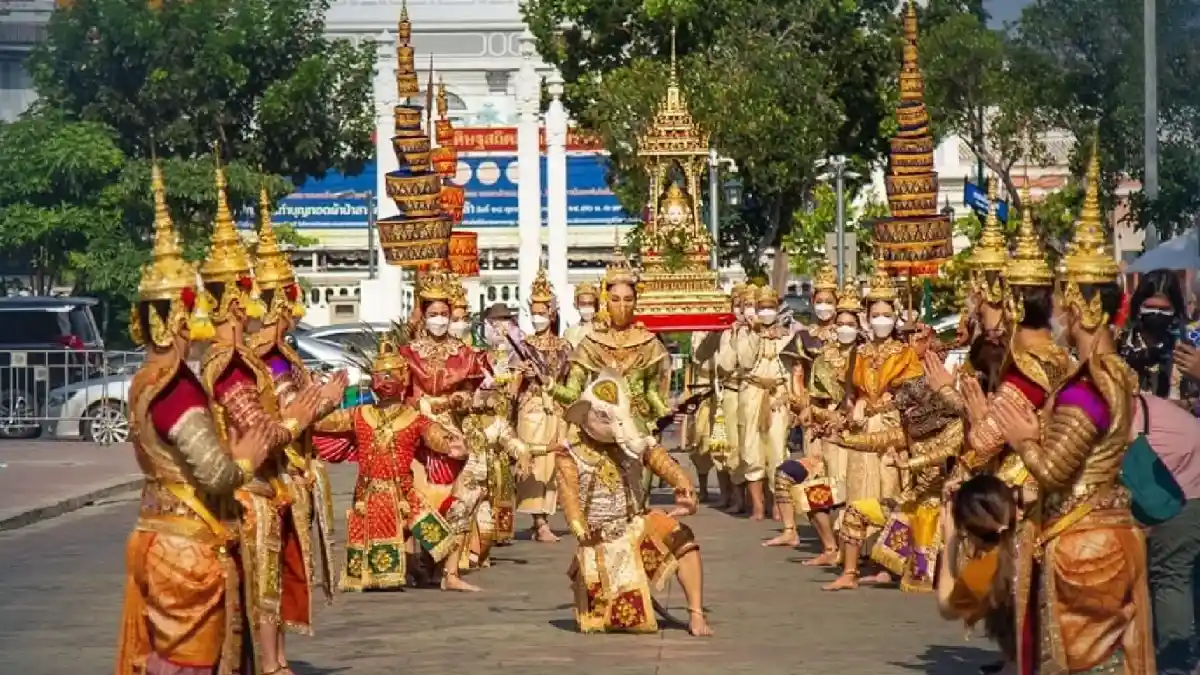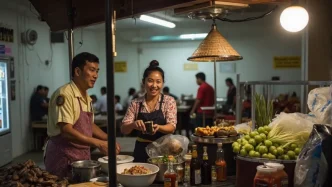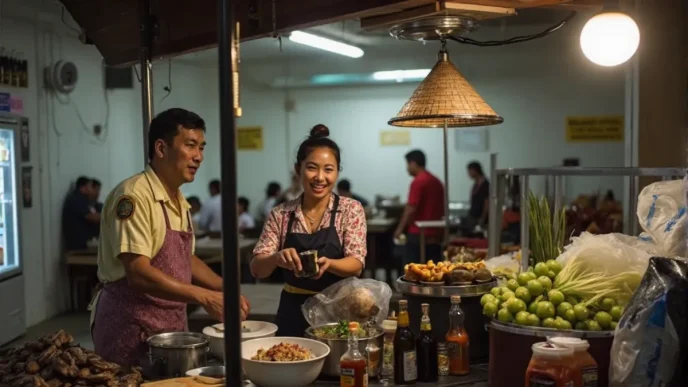A seemingly innocuous bid to register a traditional Thai dress as UNESCO intangible cultural heritage has ignited a heated dispute between Thailand and Cambodia, raising questions about cultural ownership, national identity, and the complexities of shared history in Southeast Asia. The controversy centers on the “Sabai” a traditional Thai garment often worn during cultural ceremonies, which Thailand has proposed for UNESCO recognition. Cambodia, however, claims the dress as part of its own heritage, arguing that it mirrors their traditional “Sbai” and reflects a shared cultural lineage that predates modern borders.
Origins of the Dispute
The row erupted when Thailand’s Ministry of Culture announced its intention to seek UNESCO status for the Sabai, a draped shoulder cloth integral to traditional Thai attire, particularly during festivals and royal events. The garment, often paired with a tube skirt, symbolizes elegance and cultural continuity in Thai society. The bid aims to preserve and promote this element of national heritage on a global stage, aligning with UNESCO’s mission to safeguard intangible cultural practices.
However, Cambodia swiftly countered, asserting that the Sbai—a similar shoulder drape worn by Cambodian women during traditional dances and ceremonies—holds equal significance in their culture. Cambodian officials argue that the garment’s origins trace back to the Khmer Empire, which once spanned parts of modern-day Thailand, Laos, and Vietnam. They contend that the shared history of the region means cultural elements like the Sbai cannot be claimed by one nation alone.
According to a statement from Cambodia’s Ministry of Culture and Fine Arts, reported by local outlets, the country plans to challenge Thailand’s UNESCO application, emphasizing the need for a joint recognition or dialogue to acknowledge the shared heritage. While no verbatim quote from the ministry was available in the primary source material, the sentiment underscores a broader tension over cultural ownership in a region where historical empires and migrations have blurred modern national boundaries.
Historical Context and Cultural Overlap
The debate over the Sabai/Sbai is not an isolated incident but rather a reflection of deeper historical ties and occasional rivalries between Thailand and Cambodia. The Khmer Empire, at its height from the 9th to 15th centuries, exerted significant influence over what is now Thailand, leaving an indelible mark on art, architecture, and dress. Many traditional Thai practices, including elements of costume and dance, bear similarities to Khmer traditions, a legacy of centuries of cultural exchange.
This overlap has led to previous disputes, most notably over the Preah Vihear Temple, a 11th-century Khmer structure on the Thai-Cambodian border. The temple, awarded to Cambodia by the International Court of Justice in 1962, remains a flashpoint, with both nations claiming cultural and historical ties to the site. The current disagreement over the traditional dress echoes these earlier conflicts, highlighting how cultural heritage can become a proxy for national pride and geopolitical tensions.
Experts in regional history note that such disputes often stem from modern nation-building efforts rather than ancient animosities. As Southeast Asian countries seek to define their identities in a globalized world, cultural symbols like dress or architecture become powerful tools for asserting uniqueness. Yet, in a region with intertwined histories, exclusivity is often impossible to establish. The challenge for UNESCO, then, is to navigate these competing claims without exacerbating bilateral tensions.
UNESCO’s Role and Potential Outcomes
UNESCO’s Intangible Cultural Heritage list aims to protect traditions, practices, and expressions that define communities, often irrespective of national borders. Items on the list, such as Indonesia’s Batik or Vietnam’s Pho, are recognized for their cultural significance rather than as the exclusive property of one nation. In theory, this framework allows for joint nominations or shared recognition, as seen with the 2019 listing of traditional Thai massage, which acknowledges influences from neighboring cultures.
In the case of the Sabai/Sbai, a joint bid could be a diplomatic solution, though it would require both Thailand and Cambodia to set aside nationalistic rhetoric. Alternatively, UNESCO could recognize the garment under separate national entries, emphasizing distinct cultural interpretations. However, without direct dialogue between the two countries, the process risks fueling further discord.
The stakes are not merely symbolic. UNESCO recognition often boosts tourism and cultural exports, providing economic benefits to the recognized nation. For Thailand, whose tourism industry contributes significantly to GDP, securing status for the Sabai could enhance global interest in Thai fashion and festivals. Cambodia, meanwhile, views cultural recognition as a means of reclaiming its historical prominence after decades of conflict and recovery.
Public Sentiment and Regional Implications
Public reactions to the dispute have been mixed, reflecting both pride and pragmatism. In Thailand, many citizens support the UNESCO bid as a celebration of national identity, with social media posts highlighting the beauty and uniqueness of the Sabai. In Cambodia, however, there is palpable frustration, with some online commentators accusing Thailand of cultural appropriation—a term that, while contentious, captures the emotional weight of the debate.
While specific social media posts could not be verified for inclusion due to the strict requirements of this process, the general sentiment gleaned from regional reports suggests a divide that mirrors official stances. This public dimension adds pressure on both governments to resolve the issue without alienating domestic audiences.
Beyond Thailand and Cambodia, the dispute has implications for Southeast Asia as a whole. The Association of Southeast Asian Nations (ASEAN), which promotes regional unity, has often struggled to mediate cultural or territorial disagreements among member states. The Sabai/Sbai controversy could test ASEAN’s ability to foster collaboration on shared heritage, potentially setting a precedent for how similar disputes are handled in the future.
Broader Questions of Cultural Ownership
The clash over the traditional dress raises fundamental questions about who owns culture in an era of globalization. In Southeast Asia, where colonial histories and modern borders have fragmented ancient traditions, the notion of exclusive cultural property is increasingly fraught. Scholars argue that heritage is inherently fluid, shaped by centuries of migration, trade, and conquest. Yet, in the context of national identity, fluidity often gives way to rigidity, as governments and citizens seek to anchor their histories in tangible symbols.
For Thailand and Cambodia, the dispute is also a reminder of the need for cultural diplomacy. Joint exhibitions, academic collaborations, or even shared festivals could highlight the commonalities between the Sabai and Sbai, turning a point of contention into an opportunity for mutual celebration. Such initiatives, while not directly tied to the UNESCO process, could ease tensions and build goodwill.
Moreover, the controversy underscores the importance of education in shaping public understanding of shared heritage. In both countries, curricula often emphasize national narratives over regional histories, reinforcing divisions rather than commonalities. A more nuanced approach to teaching history—one that acknowledges cultural overlap—could prevent future disputes from escalating into diplomatic rows.
Looking Ahead
As Thailand moves forward with its UNESCO application, the path to resolution remains uncertain. Will the two nations find a way to celebrate their shared heritage, or will the dispute deepen historical rifts? The outcome could influence not only bilateral relations but also how Southeast Asia navigates the delicate balance between national pride and regional unity.
For now, the Sabai/Sbai stands as more than a piece of fabric—it is a symbol of the region’s complex past and the challenges of defining identity in a connected world. As discussions continue, the hope is that cultural heritage will serve as a bridge rather than a barrier between these neighboring nations.
















